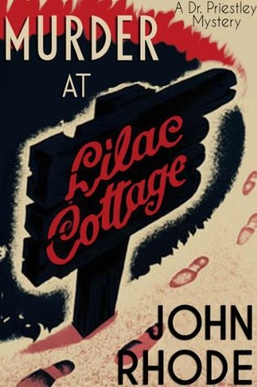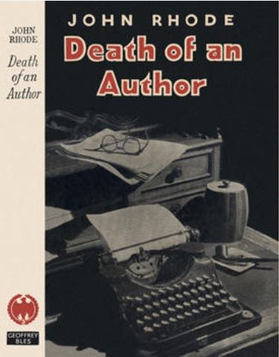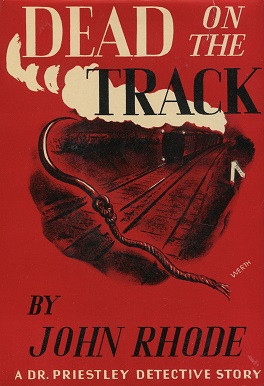
The Hanging Captain is a 1932 mystery detective novel by the British writer Henry Wade. Wade was a writer of the Golden Age of Detective Fiction, best known for his series featuring Chief Inspector Poole. This was one of a number of stand-alone novels he wrote.

The Verdict of You All is a 1926 mystery detective novel by the British writer Henry Wade, his debut novel. Both this and his following novel The Missing Partners revolve around potential miscarriages of justice. It was published in the United States by Payson and Clarke in 1927. A success it launched his career as one of the prominent writers during the Golden Age of Detective Fiction. The title refers to the traditional question asked in court by a judge of the jury to establish whether they have reached a unanimous verdict.

The Missing Partners is a 1928 mystery detective novel by the British writer Henry Wade. It was his second novel following his successful debut The Verdict of You All in 1926.

The Man Who Grew Tomatoes is a 1959 mystery detective novel by the British writer Gladys Mitchell. It is the thirty second in the long-running series of books featuring Mitchell's best known creation, the psychoanalyst and amateur detective Mrs Bradley.

The Twenty-Third Man is a 1957 mystery detective novel by the British writer Gladys Mitchell. It is the thirtieth in the long-running series of books featuring Mitchell's best known creation, the psychoanalyst and amateur detective Mrs Bradley.

Sir John Magill’s Last Journey is a 1930 detective novel by the Irish writer Freeman Wills Crofts. It is the sixth in his series of novels featuring Inspector French, a prominent figure of the Golden Age of Detective Fiction. Much of the novel takes place in Northern Ireland, particularly around Belfast, where Crofts had spent a great deal of his younger years before moving to England. As with many of his puzzle mysteries its solution revolves around railway timetables as well as the possible distance a boat could cover in a certain time.

Murder at Lilac Cottage is a 1940 detective novel by John Rhode, the pen name of the British writer Cecil Street. It is the thirty third in his long-running series of novels featuring Lancelot Priestley, a Golden Age armchair detective. In the Times Literary Supplement reviewer Maurice Willson Disher noted "With both ingenuity and originality at command, he will keep puzzle-solvers guessing until it pleases Dr. Priestley to explain why clues are not what they seem." while Ralph Partridge gave it a broadly positive review in the New Statesman.

Death of an Author is a 1947 detective novel by John Rhode, the pen name of the British writer Cecil Street. It is the forty fifth in his long-running series of novels featuring Lancelot Priestley, a Golden Age armchair detective. The New Yorker described it as "Rather pleasant, in a ponderous fashion" while Will Cuppy, writing in the New York Herald Tribune, felt "Mr. Rhode provides one of those satisfying British stories in the old tradition, full of mystery meat and brain-work."

Up the Garden Path is a 1949 detective novel by John Rhode, the pen name of the British writer Cecil Street. It is the forty ninth in his long-running series of novels featuring Lancelot Priestley, a Golden Age armchair detective. It was published in America by Dodd Mead under the alternative title The Fatal Garden. Reviewing the novel in The Observer, Maurice Richardson concluded "Mr. Rhode has lost very little of his grip."

Family Affairs is a 1950 detective novel by John Rhode, the pen name of the British writer Cecil Street. It is the fifty first in his long-running series of novels featuring Lancelot Priestley, a Golden Age armchair detective. It was published in America by Dodd Mead under the alternative title The Last Suspect. It has been described as "probably the best post-war Rhode novel".

The Secret Meeting is a 1951 detective novel by John Rhode, the pen name of the British writer Cecil Street. It is the fifty second in his long-running series of novels featuring Lancelot Priestley, a Golden Age armchair detective. It was published in America the same year by Dodd Mead. Unusually for the series it has an early Cold War element.

Proceed with Caution is a 1937 detective novel by John Rhode, the pen name of the British writer Cecil Street. It is the twenty-seventh in his long-running series of novels featuring Lancelot Priestley, a Golden Age armchair detective. It was published in the United States the same year by Dodd Mead under the alternative title Body Unidentified.

Dead on the Track is a 1943 detective novel by John Rhode, the pen name of the British writer Cecil Street. It is the thirty seventh in his long-running series of novels featuring Lancelot Priestley, a Golden Age armchair detective. Like a number of mystery novels of the era, it has a railway setting. In theme and plot it is very similar to the author's earlier 1931 work Tragedy on the Line. It is the first entry in the series since Hendon's First Case (1935) in which Priestley's old associate Hanslet is the lead investigator. The other recurring police officer in the series Inspector Jimmy Waghorn is now working with military intelligence.

Death in Wellington Road is a 1952 mystery detective novel by John Rhode, the pen name of the British writer Cecil Street. It is the fifty fifth in his long-running series of novels featuring Lancelot Priestley, a Golden Age armchair detective. It was published in America the same year by Dodd Mead. A review in The New Yorker considered it "Not exactly inspired, but still a solid and conscientious job.".

The Body in the Silo is a 1933 detective novel by the British author Ronald Knox. It is the third in a series of five novels featuring the insurance investigator Miles Bredon, one of the many detectives of the Golden Age of Detective Fiction. It is a country house mystery taking place in Herefordshire close to the Welsh border. It was published in the United States by Dutton under the alternative title Settled Out of Court.

Double Cross Purposes is a 1937 mystery detective novel by the British author Ronald Knox. It is the fifth and last in his series of novels featuring the insurance investigator Miles Bredon, one of the Golden Age Detectives. Live the previous novel it takes place in Scotland. It features several characters who appeared in earlier novels, including the schoolmaster Edward Pulteney whose skills at fishing come in useful to Bredon. While Knox continued to write prolifically for many years, this remained his last novel in the detective genre.

Toper's End is a 1942 detective novel by the British authors G.D.H. Cole and Margaret Cole. It was the final entry in their series of over twenty books dating back to 1923 featuring Superintendent Wilson, a former officer of Scotland Yard turned Private Detective. Part of the Golden Age of Detective Fiction, it takes place against the backdrop of the Second World War. It was published by the Collins Crime Club.

Murder at the Munition Works is a 1940 detective novel by the British husband and wife writing team G.D.H. Cole and Margaret Cole. One of the later entries into their series of Golden Age series featuring Superintendent Wilson of Scotland Yard, it was the first to be released following the outbreak of the Second World War. It was published by the Collins Crime Club and released by Macmillan in the United States.

Death in the Quarry is a 1934 detective novel by the British authors G. D. H. Cole and Margaret Cole. It was the twelfth in their series of novels featuring Superintendent Wilson, one of the many investigators of the Golden Age of Detective Fiction. It was published by the Collins Crime Club.

The Man from the River is a 1928 detective novel by the British authors G. D. H. Cole and Margaret Cole. It was the fourth in a series of novels written by the couple during the Golden Age of Detective Fiction featuring Superintendent of Scotland Yard. It was published by the Collins in London and Macmillan in the United States.




















